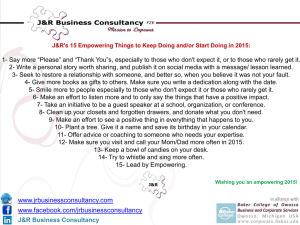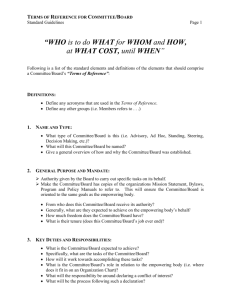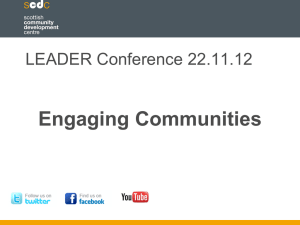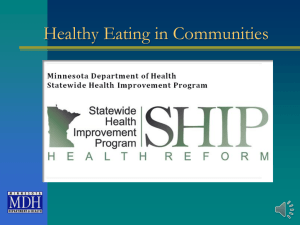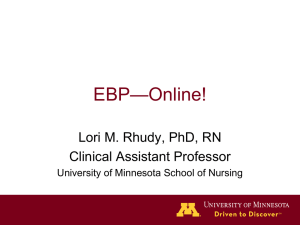Document
advertisement
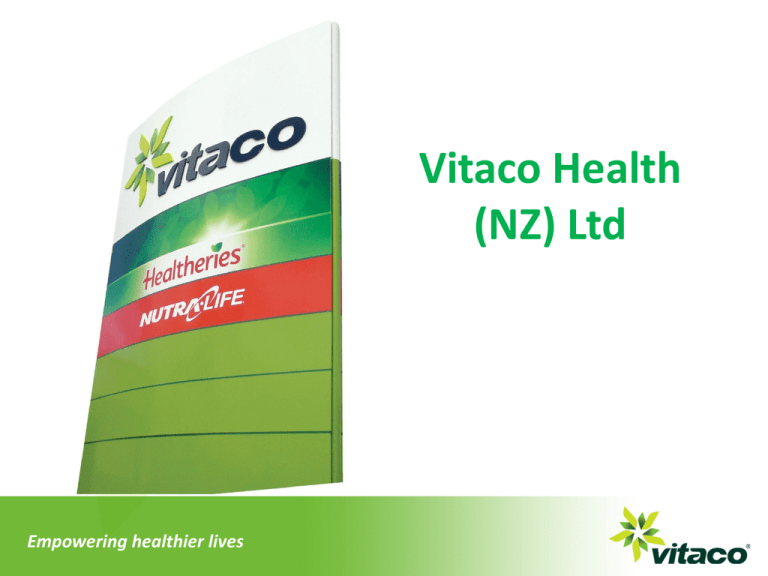
Vitaco Health (NZ) Ltd Empowering healthier lives Empowering healthier lives Breakdown of Vitaco’s Total Business …. by Segment …. by Market 15% 37% 48% NZ Australia International Food & Beverage Sports Nutrition Supplements Agency Approx. 63% of total company revenue is generated outside of NZ Empowering healthier lives Supplements is still core of our business but other areas have and continue to show significant growth Vitaco’s International Business N. Asia Australian Contract SE Asia & Pacific Europe Middle East NZ Contract We currently export our brands to around 30 countries under a variety of different Sales and distribution agreements. SE Asia is our 2nd largest export market behind Nth Asia We have been exporting to SE Asia for approx 15yrs Empowering healthier lives International Market Entry Checklist Proactive Model Collection and analysis of information on; • The specific market e.g. Market size and value; distribution channels; major competitors , sales taxes (GST), etc • The regulatory environment e.g. Registration procedures, product classification, customs duty, import licenses, product labelling etc • Potential local distributors e.g. Size, turnover, experience, competencies etc Empowering healthier lives Case Study – The Reactive Model Thailand Background; • Approached by a company who is already distributing a competitor brand in the Market. • They understand how the products are classified from a regulatory perspective • They have previous experience registering similar products with the local regulatory authorities. • They have been able to provide information on the size of the market and their share. • They have an established client base in the appropriate distribution channel. • They have been able to provide us with information on competitor pricing and the distribution channel’s margin structure. Next steps; • Preliminary estimate of the size of the opportunity using data on market size and product pricing/margin analysis etc. • Analysis of the resources and costs required to register and the likely timeline to launch • Analysis of the barriers to entry, e.g. country specific labelling, suitability of local formulations • Evaluate potential distributor’s strengths and weaknesses, clarify their expectations of us as brand owner, and consider pros & cons of being a 2nd brand with this distributor Finally a decision will be made on whether to prioritise this opportunity and allocate the required resources. Empowering healthier lives International Market Entry Expanded Check List 1. Information Relating to Marketing of Products • • • • • • • • • • • Which particular products are they interested in? What region[s] and channel[s] would these products be sold through? Total Market size[s] & value[s] Breakdown showing size and value of major segments that make up total market Competitor brands Major brands, form and retail prices of similar products currently in market Margin structure in market, e.g. duty, wholesaler margin, distributor margin, retailer margin What Distribution channels would our products be sold through? Attitude of consumers to New Zealand products such as these Attitude / knowledge of consumers about this product category Regulations / laws relating to promotion of these types of products Empowering healthier lives International Market Entry Expanded Check List 2. Information Relating to Regulatory Environment of Potential Market • • • • • • • • Tariff code for this type of products Duty rates/Free Trade agreements? Import Quotas (if any) Registration procedures and authorities, including details of product registration ownership structure Labelling requirements (nutritional, language etc) Import requirements (e.g. import licences) Documentation requirements (e.g.health certificates, origin certificates etc) Any impending changes to regulatory environment that will affect these types of products? Empowering healthier lives International Market Entry Expanded Check List 3. Information Regarding Potential Local Distributor • • • • • • • • • • • • Size - annual sales turnover, number of staff Number of years in business Ownership structure Other products marketed Associations / distribution agreements with other companies and products involved Distribution network – how, and to whom are similar products they currently sell distributed to? Strategic alliances Marketing and sales infrastructure [including type and number of outlets] Ability to influence decision makers in channels Sales potential / performance targets for our products Coverage of all business functions – registration, import, marketing, sales, distribution, customer feedback Are you aware of any impending changes which may affect the market for these types of products? Empowering healthier lives
